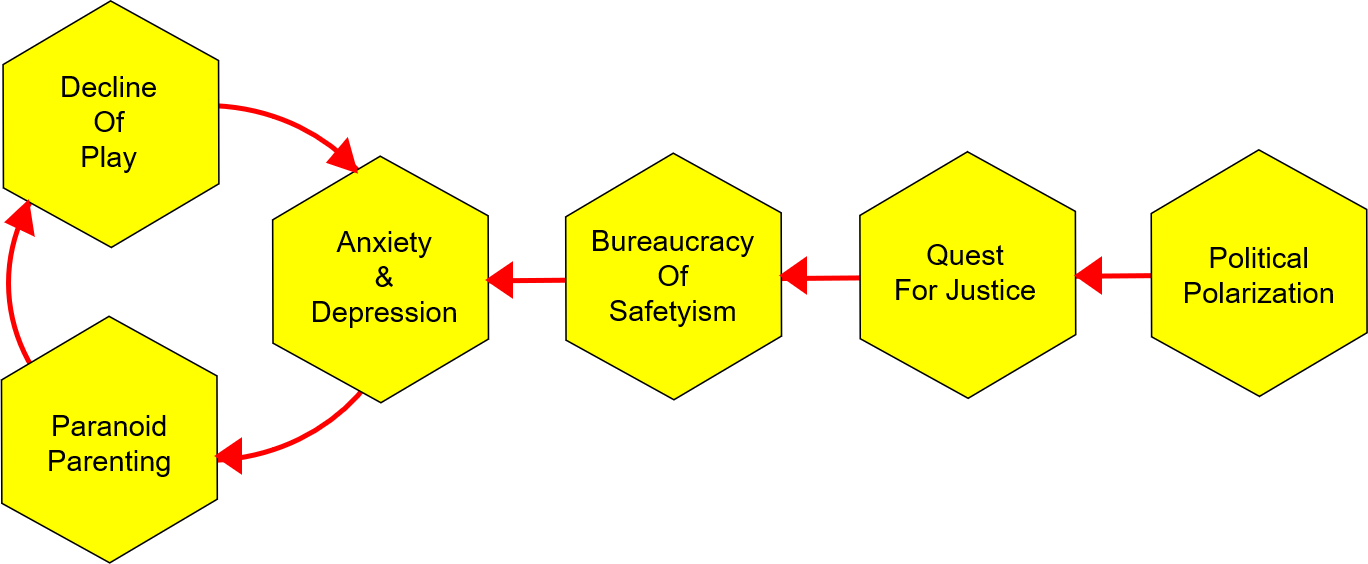
I bought a copy of The Coddling Of The American Mind. Two reasons. One, it sounded like another interesting data point to challenge or verify the GenerationDNA model. Two, it talks about antifragility. Specifically, antifragility – or the lack thereof – in the current generation of students. Recent experiences with students almost everywhere I travel is that there’s a fragility problem. Over-protection is endemic. Lack of critical thinking even worse. Which is not good from a future-of-innovation perspective.
I’m not sure I got too much out of the book to be honest. It certainly serves to confirm the GenerationDNA story, so while that’s ‘nice’, it didn’t open up any new lines of enquiry that might help strengthen the theory. It does, however, contain a few juicy snowflake horror stories, which are always nice to shock audiences with. On the negative side, half the time it felt like I was being sold a CBT course, and there’s not much I dislike more than buying something that then feels like an advert asking me to buy something else. Never mind, I’m resolved to let these things wash over me in 2019. So that just leaves the somewhat bigger problem of just how facile and trite the book’s ‘solution’ recommendations were. The problem, here, I think is that beyond identifying a number of candidate factors that have contributed to the coddling problem, the authors had no idea how to make sense out of them. And if they don’t know what the real problem is, no wonder their suggested remedies end up being glib.
What they were missing I believe – I would say this wouldn’t I? – is a sensemaking tool. Good to identify six contributory factors; not good failing to understand that it’s the relationship between these factors that determines what the real problem is. It felt like time for a Perception Map. As it happens, a really simple one, seeing as there are only six ‘perceptions’ to be mapped.
The six Coddling-causing factors are:
Polarization Cycle – left/right polarization with, particularly, the left being dominant within academia.
Anxiety & Depression – the rise in adolescent anxiety and depression, starting around 2011.
Paranoid Parenting – moving away from antifragile towards fragile, and the three great untruths – what doesn’t kill you makes you weaker; always trust your feelings; life is a battle between good people and evil people
Decline Of Play – decline of unsupervised play, play being crucial to neural development
Bureaucracy of Safetyism – campus bureaucracy increasingly about ‘covering your ass’, expansion of its protective mission and concept-creep of what counts as ‘violence’, also increased competition means treating students as ‘customers’ (who are, by definition, ‘always right’)
Quest For Justice – students responding to powerful political events with a commitment to social justice activism.
And when I map out which one of the others each perception leads-to, I ended up with this picture:
 It’s sometimes difficult to generate any kind of insight from such a small map, but in this case the vicious cycle that has to be broken seems quite clear, and the simplest way to break it seems clearer still: let kids play again. Get them out of their anxiety downward spiral and it doesn’t matter how polarized the politicians get, or how idiotic the university administrators become, the students will work out what they need to do. You’re welcome.
It’s sometimes difficult to generate any kind of insight from such a small map, but in this case the vicious cycle that has to be broken seems quite clear, and the simplest way to break it seems clearer still: let kids play again. Get them out of their anxiety downward spiral and it doesn’t matter how polarized the politicians get, or how idiotic the university administrators become, the students will work out what they need to do. You’re welcome.
